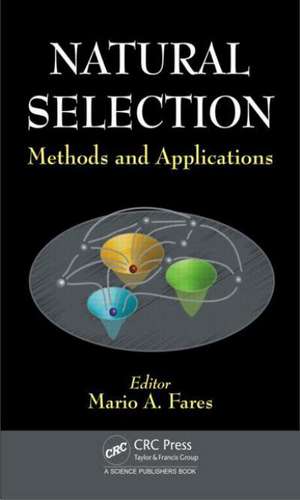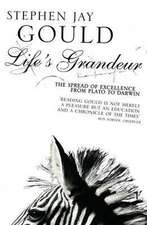Natural Selection: Methods and Applications
Autor Mario A. Faresen Limba Engleză Hardback – 21 noi 2014
A collection of the main methods to detect selection in protein-coding genes and amino acid sequences is given at different levels of complexity, from nucleotides to proteins and molecular networks. The importance of identifying natural selection in genes and genomes through the methods described in this book transcends the bioinformatics and computational biology fields, presenting applications for experimental biologists in a straightforward and understandable way.
Preț: 988.54 lei
Preț vechi: 1329.84 lei
-26% Nou
Puncte Express: 1483
Preț estimativ în valută:
189.18€ • 196.78$ • 156.18£
189.18€ • 196.78$ • 156.18£
Carte tipărită la comandă
Livrare economică 12-26 aprilie
Preluare comenzi: 021 569.72.76
Specificații
ISBN-13: 9781482263725
ISBN-10: 1482263726
Pagini: 252
Ilustrații: 23 black & white illustrations, 7 colour illustrations
Dimensiuni: 156 x 234 x 25 mm
Greutate: 0.54 kg
Ediția:1
Editura: CRC Press
Colecția CRC Press
ISBN-10: 1482263726
Pagini: 252
Ilustrații: 23 black & white illustrations, 7 colour illustrations
Dimensiuni: 156 x 234 x 25 mm
Greutate: 0.54 kg
Ediția:1
Editura: CRC Press
Colecția CRC Press
Public țintă
Professional Practice & DevelopmentCuprins
The Role of Natural Selection in Evolution. Identifying Evolution Signatures in Molecules. Modelling Evolution of Molecular Sequences. Identifying Natural Selection with Molecular Data. Inferring Functional Divergence in Protein Sequences. The Influence of Recombination on the Estimation of Selection from Coding Sequence Alignments. Why Proteins Evolve at Different Rates: The Determinants of Proteins’ Rates of Evolution. The Network Framework of Molecular Evolution.
Descriere
A number of mathematical models and methods have been designed to identify the fingerprints of natural selection on genes and genomes. This book summarizes the knowledge in the field of methods to identify signatures of natural selection. The book presents the methods in a simple and direct way so that students of different disciplines can navigate through molecular fitness landscapes with only basic knowledge of bioinformatics. The book explores different levels of complexity, from nucleotides to proteins and molecular networks.












